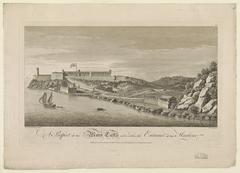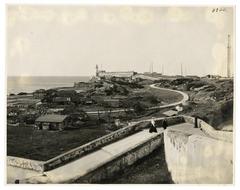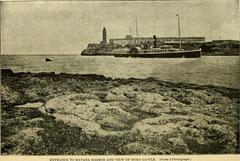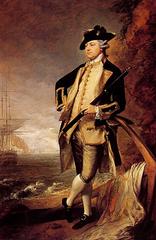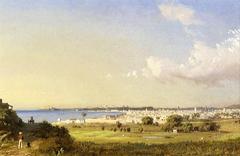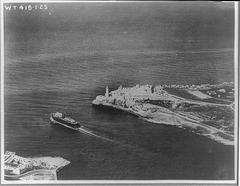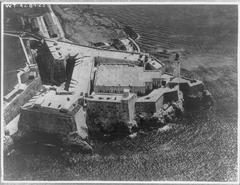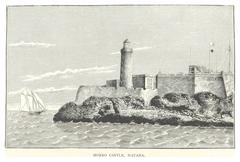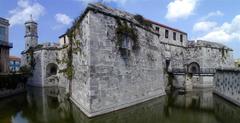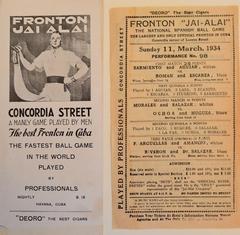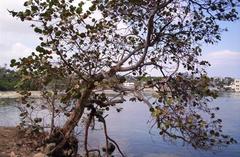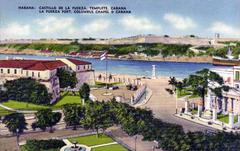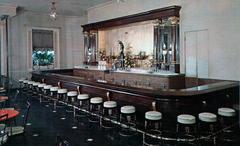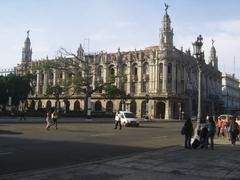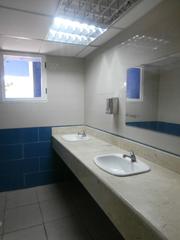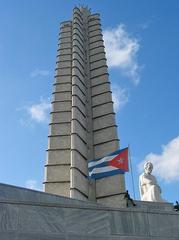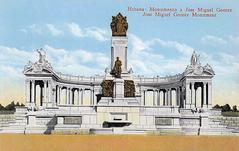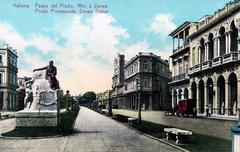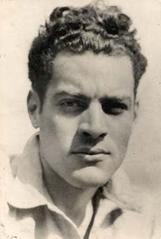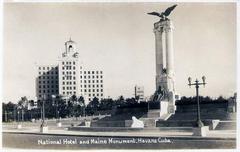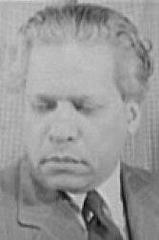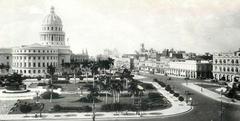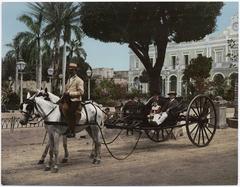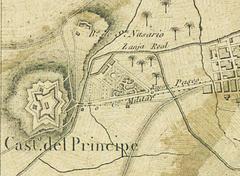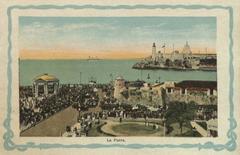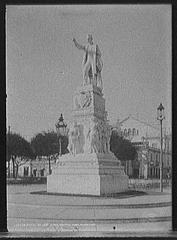
Morro Castle Visiting Hours, Tickets, and Historical Sites in Havana Province, Cuba
Date: 14/06/2025
Introduction: Morro Castle’s History and Cultural Significance
Morro Castle, officially named Castillo de los Tres Reyes del Morro, stands sentinel at the entrance of Havana Bay and is one of Cuba’s most iconic historic sites. Built between 1589 and 1630, the fortress was designed by Italian engineer Juan Bautista Antonelli under the orders of King Philip II of Spain. Its construction was part of a larger plan to protect Havana—then a crucial port in the Spanish empire—from pirates and foreign navies. Today, Morro Castle is celebrated not only for its Renaissance military architecture and panoramic views of Havana, but also as a vibrant cultural symbol. Recognized as part of a UNESCO World Heritage Site since 1982, the castle is famous for its nightly “Cañonazo de las Nueve” cannon firing ceremony, which helps keep Havana’s colonial heritage alive for both residents and visitors. This guide explores everything you need to know for your visit, including practical tips on hours, ticketing, accessibility, cultural events, and nearby attractions. (UNESCO, Trip Cuba, Rusty Travel Trunk)
Table of Contents
- About Morro Castle: An Overview
- Origins and Strategic Purpose
- Architectural Features and Innovations
- Role in Colonial Conflicts
- Visiting Morro Castle: Hours, Tickets & Tips
- Nearby Attractions
- Cultural Traditions and Events
- Preservation and Museum Experience
- FAQ: Essential Visitor Information
- Travel Tips
- Conclusion and Planning Your Visit
About Morro Castle: An Overview
Rising above Havana’s harbor on a rocky promontory, Morro Castle is both a military stronghold and a symbol of Havana’s resilience. Its strategic location allowed defenders to monitor and protect one of the Caribbean’s busiest ports, while today, its ramparts provide unparalleled views of the city and sea.
Origins and Strategic Purpose
Commissioned by the Spanish crown in the late 16th century, Morro Castle was built to counter the threat of pirates and foreign fleets. Its name, “Morro,” refers to the rocky headland on which it stands, serving as an early warning post and defensive barrier for Havana’s bay. The fortress formed part of a broader network of fortifications that secured Spain’s interests in the Americas. (UNESCO)
Architectural Features and Innovations
Morro Castle exemplifies Renaissance military architecture, featuring massive limestone walls up to 3 meters thick, angular bastions, and a star-shaped irregular polygonal plan. The deep moat, underground tunnels, and multi-level design reflect advanced military engineering of the period. The castle’s iconic lighthouse, Faro del Morro, was added in 1844 and remains operational, guiding ships safely into the harbor. (Cuba Travel, Trip Cuba)
Role in Colonial Conflicts
The most significant episode in Morro Castle’s military history occurred during the British siege of 1762, part of the Seven Years’ War. Despite a determined defense, British forces captured the fortress after heavy bombardment, only to return Havana to Spain in exchange for Florida. Following this event, Spanish authorities reinforced Havana’s defenses, including the construction of nearby La Cabaña Fortress. (Smithsonian Magazine)
Visiting Morro Castle: Hours, Tickets & Tips
Visiting Hours
- Monday–Friday: 9:00 AM – 5:00 PM
- Weekends: 8:00 AM – 4:00 PM
- Last Entry: 30 minutes before closing (Trip Cuba)
Ticket Prices
- General Admission: 4–6 CUC/USD (varies by source)
- Lighthouse Access: Additional 2 CUC/USD
- Discounts: Students, seniors, and children under 12 may receive reduced or free entry
Tickets are purchased at the entrance or online via official tourism sites.
How to Get There
Located at the mouth of Havana Bay in La Habana del Este, Morro Castle is accessible by taxi, public transport, or a scenic walk from Old Havana along the Malecón. Walking across the harbor via ferry or tunnel is also an option (Every Castle).
Accessibility
Due to its historic design, some areas are challenging for visitors with mobility issues (steep stairs, uneven terrain). However, certain sections are wheelchair accessible; it is advisable to inquire ahead.
Guided Tours and Audio Guides
Guided tours are available in Spanish and English, offering in-depth historical context. Audio guides can be rented on-site or accessed through mobile apps such as Audiala, enhancing your visit with expert commentary (Anywhere Cuba).
Photo Opportunities
The fortress offers exceptional panoramic views of Havana’s skyline, the harbor, and the sea—particularly at sunrise and sunset, which are ideal for photography (AFAR).
Nearby Attractions
- La Cabaña Fortress: Adjacent to Morro Castle, offering museums, exhibitions, and a similar cannon ceremony.
- Old Havana (Habana Vieja): UNESCO-listed, filled with colonial architecture, plazas, and museums.
- Malecón: Iconic seawall perfect for walks and sunset views.
Cultural Traditions and Events
The Cañonazo Ceremony
The nightly “Cañonazo de las Nueve” at 9:00 PM is a reenactment of the historic cannon firing that once signaled the closing of Havana’s city gates. Actors in colonial uniforms stage the ceremony, creating a memorable cultural experience for visitors and locals alike (Cuba Absolutely).
Preservation and Museum Experience
As part of Havana’s UNESCO World Heritage Site, Morro Castle is meticulously maintained. Inside you’ll find:
- Maritime and military exhibits: Original cannons, ship models, and artifacts.
- Underwater archaeology displays: Artifacts from shipwrecks in Havana Bay.
- Historical prison cells and dungeons: Providing insight into the castle’s varied roles.
The site is managed by the Office of the Historian of Havana, ensuring ongoing restoration and educational programming.
FAQ: Essential Visitor Information
Q: What are Morro Castle’s visiting hours?
A: Open daily, typically 9:00 AM–5:00 PM (weekend hours may start earlier).
Q: How much is admission?
A: General admission ranges from $4–6 USD; lighthouse access is an additional $2 USD.
Q: Is Morro Castle wheelchair accessible?
A: Some areas are accessible, but much of the site includes stairs and uneven ground.
Q: Are guided tours available?
A: Yes, in multiple languages via local guides or audio apps.
Q: Can I pay by card?
A: Cash is recommended, as card payments may not always be accepted.
Q: Is photography allowed?
A: Yes; the site is renowned for its scenic photo opportunities.
Travel Tips
- Language: Most signage is in Spanish—consider hiring a guide or using a translation app.
- What to Bring: Comfortable shoes, sun protection, water, camera.
- Dining: An onsite restaurant serves Cuban cuisine and cold drinks; service may be slow during peak times.
- Safety: Supervise children near ramparts; keep valuables secure.
- Weather: Best visited November–April (dry season); summer months are hot and humid. (Wanderlog)
Conclusion and Planning Your Visit
Morro Castle is an essential stop on any Havana itinerary, offering a rich blend of history, culture, and spectacular views. Whether you’re interested in colonial military architecture, local traditions, or simply want to enjoy one of the best panoramas in Cuba, the fortress delivers a memorable experience. Plan ahead for optimal hours, bring cash for tickets, consider hiring a guide, and don’t miss the unique Cañonazo ceremony. For further insights and interactive experiences, download apps like Audiala or explore official tourism resources.
Additional Resources & References
- UNESCO World Heritage Centre - Old Havana and its Fortification System
- Trip Cuba - Morro Castle Havana
- Rusty Travel Trunk - Morro Castle and La Cabaña Historical Military Park
- Cuba Travel - Castillo de los Tres Reyes del Morro
- Every Castle - Morro Castle Visiting Hours, Tickets, and Historical Significance
- AFAR - El Morro Castle, Havana
- Anywhere Cuba - El Morro Historical Park
- Cuba Absolutely - Cañonazo Ceremony
- Wanderlog - Castle of the Three Kings of Morro
For interactive maps, virtual tours, and more guides on Havana’s historical sites, visit the official Havana Tourism Site.

